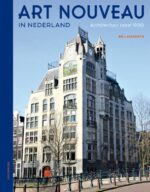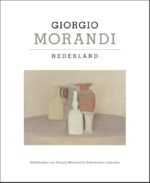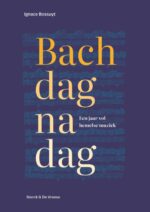De vogel en de componist
€ 24,90
Beethoven en zijn vriend Schindler stopten tijdens een wandeling bij een kabbelend beekje en Beethoven zei: ‘Hoor je de zang van de merel en de koekoek? … Hier heb ik twintig jaar geleden mijn Pastorale ontworpen. De vogels speelden en zongen in de takken. Ze hebben samen met mij gecomponeerd.’ Componisten uit alle eeuwen en streken lieten zich door
vogelzang inspireren. Sommigen waren echte vogelaars of natuurliefhebbers, anderen hoorden dan weer een puttertje of een zanglijster in een volière zingen. Ze observeerden, luisterden en lieten daarna het gefluit van de vogels in de muziek weerklinken. De vogel en de componist introduceert de lezer eerst in de vogelzang: Waarom zingt een vogel? Waar kan je de vogel het best waarnemen? 40 verschillende vogels klinken in 160 composities van meer dan 60 componisten. Van Händel tot Vivaldi en Prokovjef, van Ravel tot André Rieu en Alban Berg. Elke zang van de vogel en elk muziekstuk waarin de vogel figureert, kan worden afgespeeld via een QR-code.
Genomineerd voor de Jan Wolkersprijs 2022
Gerelateerde boeken
-
Art Nouveau in Nederland
€ 49,90De bloeitijd van de Art Nouveau rond het fin de siècle was kort maar hevig. Na jarenlang een buitenbeentje in de Nederlandse bouwkunst te zijn geweest, kwam in de jaren zestig de herwaardering voor de Art Nouveau op gang. Inmiddels wordt het belang van Art Nouveau voor de ontwikkeling van de bouwkunst algemeen erkend en neemt de interesse voor deze bijzondere, flamboyante stroming in de architectuur toe. In Art Nouveau in Nederland neemt Bé Lamberts u mee langs een groot aantal opmerkelijke zaken, die aansporen om bijzondere architectuur ter plekke te bekijken en die verwondering oproepen over dit waardevolle, maar zo kwetsbare erfgoed.
Bé Lamberts studeerde kunst- en architectuurgeschiedenis aan de Rijksuniversiteit Groningen. Hij werkte als onderzoeker en medewerker monumentenzorg bij diverse overheidsinstellingen en organisaties.
-
Giorgio Morandi – Nederland
€ 19,90In deze publicatie presenteert Museum Belvédère alle elf topstukken uit Morandi’s oeuvre uit Nederlands museaal bezit. Zo toont het schilderijen van de Italiaanse stillevenschilder uit verschillende Nederlandse collecties, waaronder het Stedelijk Museum te Amsterdam, Kunstmuseum Den Haag, Museum Boijmans Van Beuningen te Rotterdam, Fondation Custodia te Parijs en twee particulieren.
Deze bijzondere publicatie met verschillende papiersoorten en een cahiersteek verschijnt bij de gelijknamige tentoonstelling in Museum Belvédère, te zien van 17 juni tot en met 24 september 2023.
-
Golden Earring Clips van Dick Maas 1982-1997
€ 29,95“Voor iedereen die wil weten op welke locaties we gefilmd hebben, hoe de scenario’s tot stand kwamen, wie er allemaal in mee speelden en wie niet, wat er fout ging, bevat dit boek een schat aan informatie”. Dick Maas
Bij de vele hits uit de jaren 60 en 70 laat Golden Earring al filmpjes opnemen. De filmpjes laten losse beelden zien bij de muziek, zonder een echte betekenis. In 1982 realiseert Golden Earring zich dat het anders moet. Ingegeven door de snelle groei van de clipzender MTV in de Verenigde Staten vragen ze Dick Maas, een filmregisseur die cum laude is afgestudeerd aan de Nederlandse Filmacademie, om een clip bij Twilight Zone te maken. Na het succes van de single en de bijbehorende clip groeit Dick Maas uit tot de hofleverancier van de band en maakt hij spraakmakende Earringclips in de periode van 1982 tot en met 1997: Twilight Zone, When The Lady Smiles, Clear Night Moonlight, Turn The World Around en Burning Stuntman. Ook maakt Dick Maas de concertfilm Live From The Twilight Zone die in 1984 op MTV wordt uitgezonden.
Het boek beschrijft op zeer uitgebreide wijze de totstandkoming van de clips en de concertfilm en de grote invloed op de carrières van Golden Earring en Dick Maas. Het geeft o.a. antwoord op vragen als: In hoeverre hebben de clips bijgedragen aan het succes van de songs? Wat waren de reacties? Hoe reageerde het preutse Amerika op de provocerende erotische beeldtaal, de zwarte humor en het onverbloemde geweld? Wat werd er allemaal gecensureerd? Verloor Hillary Clinton het Democratische kandidaatschap omdat ze When The Lady Smiles als campagnelied had?
Golden Earring Clips van Dick Maas geeft een blik achter de schermen en laat zien met welke professionaliteit deze producties zijn gemaakt. De vier Earringleden, Dick Maas, zijn vaste assistent Myrna van Gilst en vele cast- en crewleden blikken terug op een belangrijk stuk van de roemruchte Earring-geschiedenis. De schrijvers hebben de beschikking gekregen over uniek archiefmateriaal, zoals de scripts en storyboards van de clips. Ook bevat het boek vele niet eerder gepubliceerde foto’s. -





